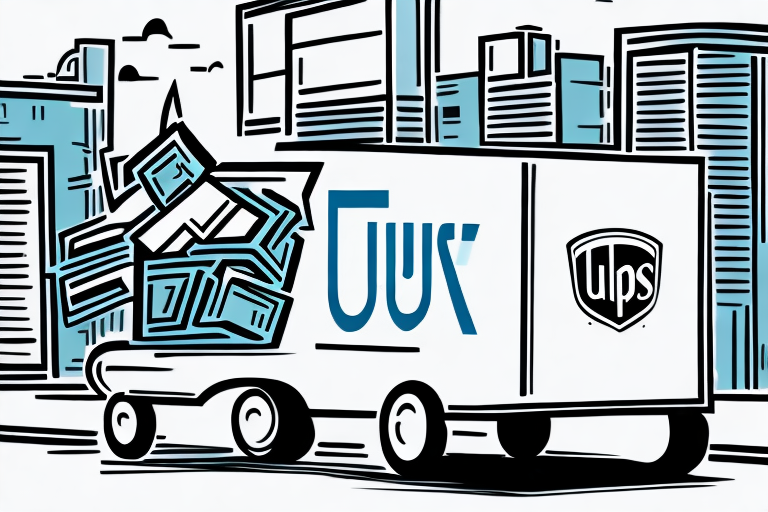Understanding the Cost of UPS Shipping Insurance
If you're shipping items with UPS, you might have noticed the option to purchase shipping insurance. But what exactly is it, and how much does it cost? In this article, we'll explore the cost of UPS shipping insurance in detail, including why you might need it, factors that affect the cost, and tips for reducing the expense.
Benefits of UPS Shipping Insurance
Protection Against Loss and Damage
Shipping insurance provides protection against damage or loss during transit. If your package is lost or damaged, you could face significant financial losses. UPS shipping insurance offers peace of mind and financial protection, especially when shipping valuable items.
Financial Security for High-Value Shipments
It is important to note that UPS shipping insurance is not automatically included in your shipping costs. You must select and pay for the insurance separately. However, the cost of the insurance is often worth the added protection, particularly for high-value items. UPS offers different levels of insurance coverage, allowing you to choose the amount of protection that best fits your needs and budget.
How UPS Shipping Insurance Works
Coverage Details
UPS shipping insurance covers the cost of lost or damaged items during transit. The cost is based on the value of the item being shipped, with coverage available up to $50,000 per package. If your package is lost or damaged, you can file a claim with UPS and receive reimbursement for the coverage amount purchased.
Exclusions and Restrictions
UPS shipping insurance does not cover items that are prohibited or restricted by law, such as hazardous materials or illegal substances. Additionally, certain items may require additional documentation or packaging to be eligible for coverage. It's recommended to review UPS's terms and conditions for shipping insurance before purchasing coverage for your package.
Calculating the Cost of UPS Shipping Insurance
Insurance Pricing Structure
To calculate the cost of shipping insurance, you'll need to know the value of the items you're shipping. UPS charges $0.95 for every $100 of coverage, so if you're shipping an item worth $500, it would cost $4.75 to insure. Keep in mind that there may be additional fees for high-value items or items requiring special handling.
Declared Value vs. Actual Value
UPS shipping insurance only covers the declared value of the item being shipped. This means that if the item is lost or damaged during transit, you will only be reimbursed for the declared value, not the actual value of the item. It's recommended to declare the full value of the item to ensure proper coverage.
Factors Influencing the Cost of UPS Shipping Insurance
Value of the Item
The primary factor affecting the cost is the value of the item being shipped. Higher-value items will naturally incur higher insurance costs.
Shipping Destination and Method
Shipping internationally typically costs more than shipping within the United States. Additionally, the shipping method chosen (e.g., express vs. standard) can impact the insurance cost.
Level of Coverage Selected
UPS offers different levels of insurance coverage, ranging from basic declared value coverage to excess value coverage for high-value items. Selecting a higher level of coverage increases the insurance cost but provides more comprehensive protection.
Types of UPS Shipping Insurance Coverage
Declared Value Coverage
Declared Value is the standard coverage offered by UPS, allowing shippers to declare a specific value for items over $100.
Excess Declared Value Coverage
Excess Declared Value provides additional coverage for high-value items, allowing shippers to declare a value higher than the standard limit.
Specialized Coverage Options
UPS offers additional coverage options for specific types of items, such as jewelry, fine art, and electronics. These specialized coverage options provide extra protection and peace of mind for shippers sending high-value items.
Filing a Claim for UPS Shipping Insurance
Claim Process Overview
If your package is lost or damaged, you can file a claim with UPS to receive reimbursement for the insured amount. Claims can be filed online, by phone, or in person at a UPS location.
Required Documentation
To successfully file a claim, you'll need to provide documentation of the package's value and the circumstances of the loss or damage. This may include receipts, invoices, and photographs of the damaged items.
Understanding Restrictions
There are certain restrictions and limitations to UPS shipping insurance. For example, items such as antiques, artwork, and jewelry may have specific coverage requirements or exclusions. Reviewing the claims process is essential to understand what is and isn't covered.
Tips to Reduce the Cost of UPS Shipping Insurance
Secure Packaging
Packaging your items securely can minimize the risk of damage during transit, potentially reducing the need for higher insurance coverage.
Choose Affordable Shipping Methods
Researching the most affordable shipping methods and destinations can help reduce the overall cost of shipping, including insurance.
Opt for Appropriate Coverage Levels
Choosing a lower coverage amount or considering self-insuring for lower-value items can help lower insurance costs.
Leverage Discounts and Promotions
Taking advantage of discounts and promotions offered by UPS, such as volume discounts for frequent shippers or seasonal promotions, can reduce insurance expenses. Visit the UPS discounts page for more information.
Exclusions and Limitations of UPS Shipping Insurance
Prohibited Items
UPS shipping insurance does not cover items that are prohibited by law or UPS policies, such as hazardous materials or certain high-value items like antiques and specific electronics.
Natural Disasters and Acts of God
Coverage does not extend to damages or losses caused by natural disasters, including earthquakes, floods, or hurricanes. Shipping to areas prone to such events may require additional insurance coverage.
Coverage Scope
UPS shipping insurance covers the cost of the item being shipped but does not cover additional costs such as shipping fees or taxes. For high-value shipments, consider purchasing additional insurance to cover all associated costs.
Comparing UPS Shipping Insurance with Other Carriers
UPS vs. FedEx vs. USPS
When choosing shipping insurance, it's important to compare options from different carriers like FedEx and USPS alongside UPS. Consider factors such as coverage limits, pricing, and exclusions to determine the best fit for your needs.
Reputation and Reliability
UPS is known for its reliable and timely delivery, which can provide added peace of mind when shipping valuable items. Additionally, UPS offers comprehensive services like package tracking and delivery confirmation that enhance the shipping experience.
Claims Process Efficiency
UPS has a streamlined claims process, allowing shippers to file claims quickly and easily in the event of a lost or damaged package. This efficiency can save time and reduce stress compared to other carriers.
Conclusion
The cost of UPS shipping insurance depends on several factors, including the value of the items, shipping destination, and chosen coverage level. By understanding these factors and comparing insurance options, you can make informed decisions to protect your valuable shipments effectively.








